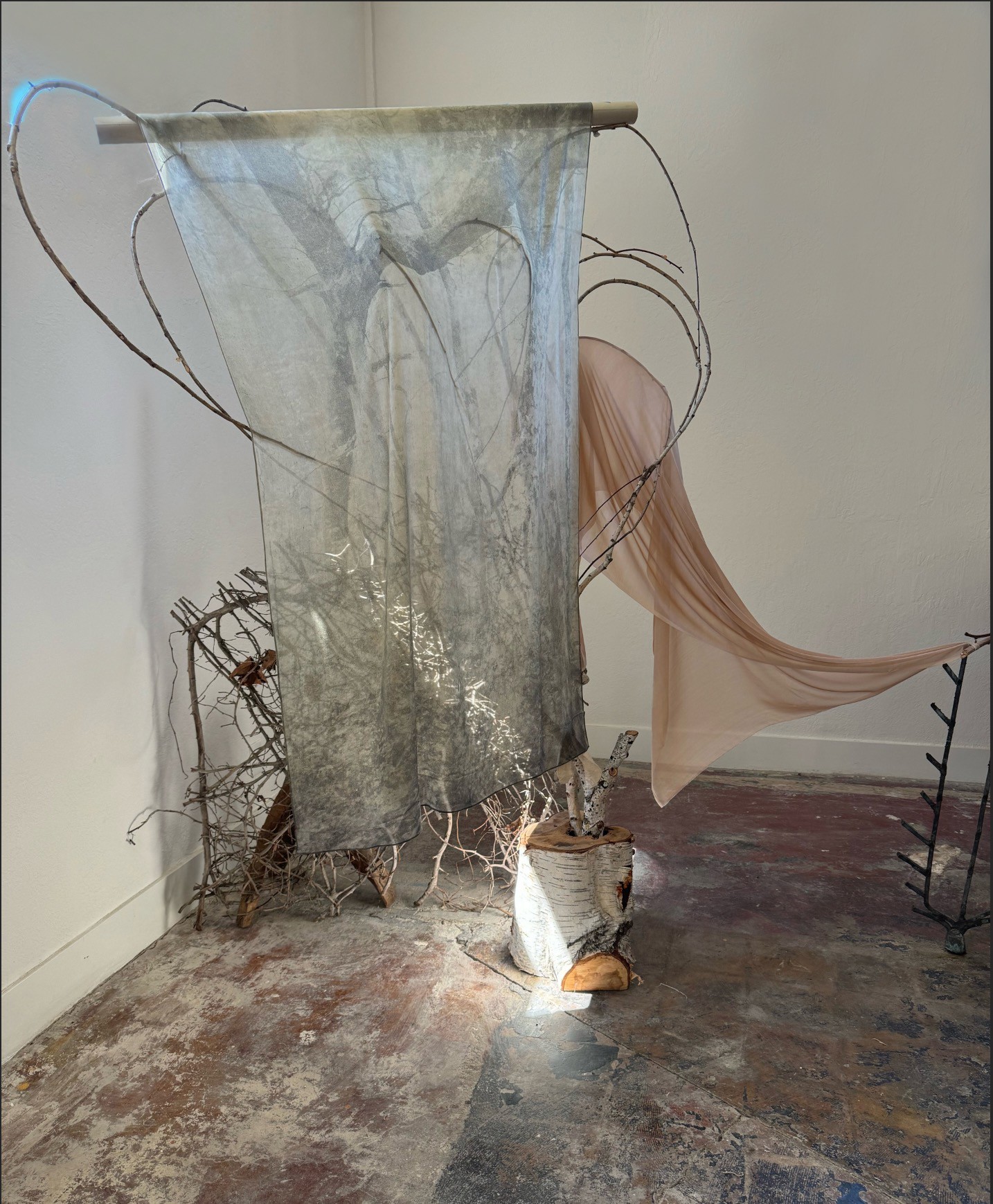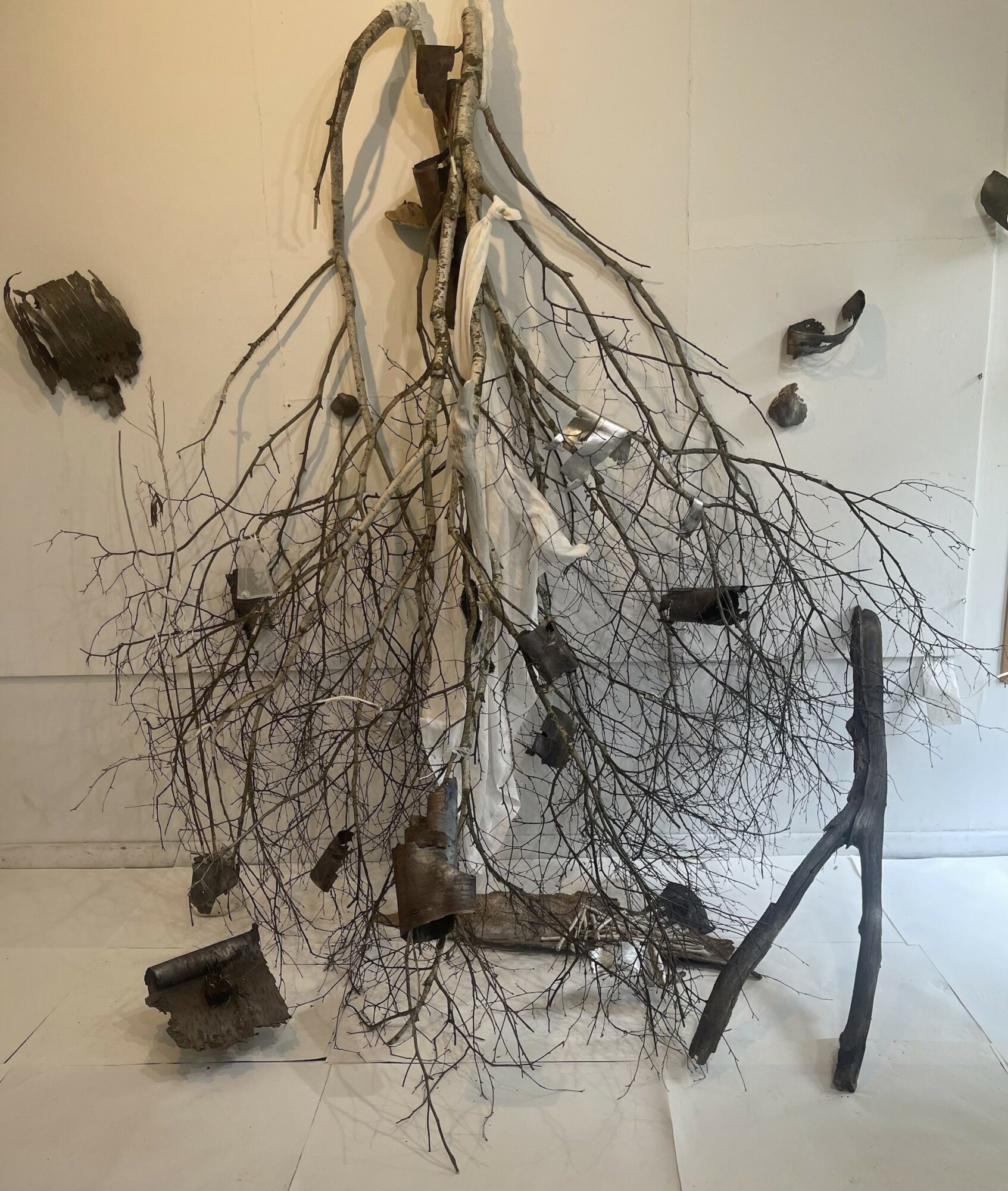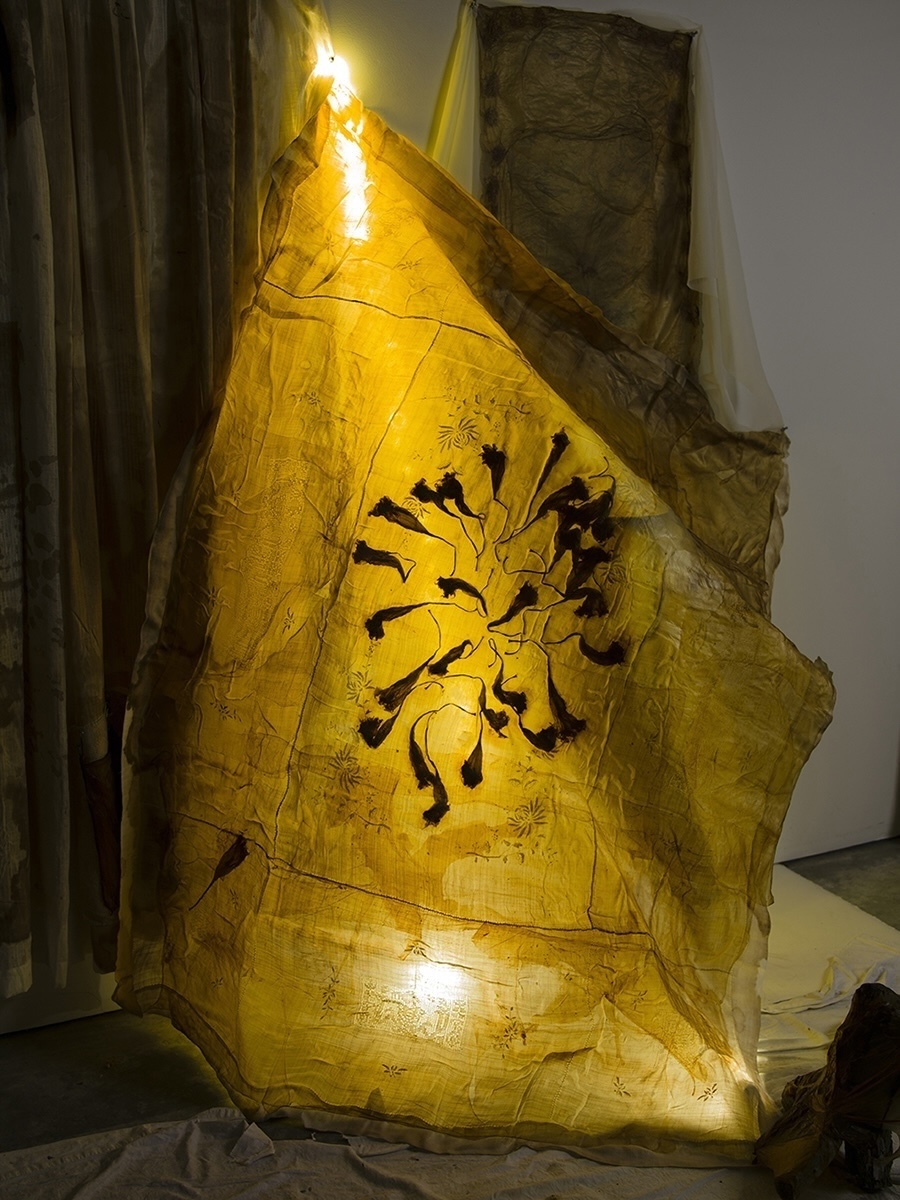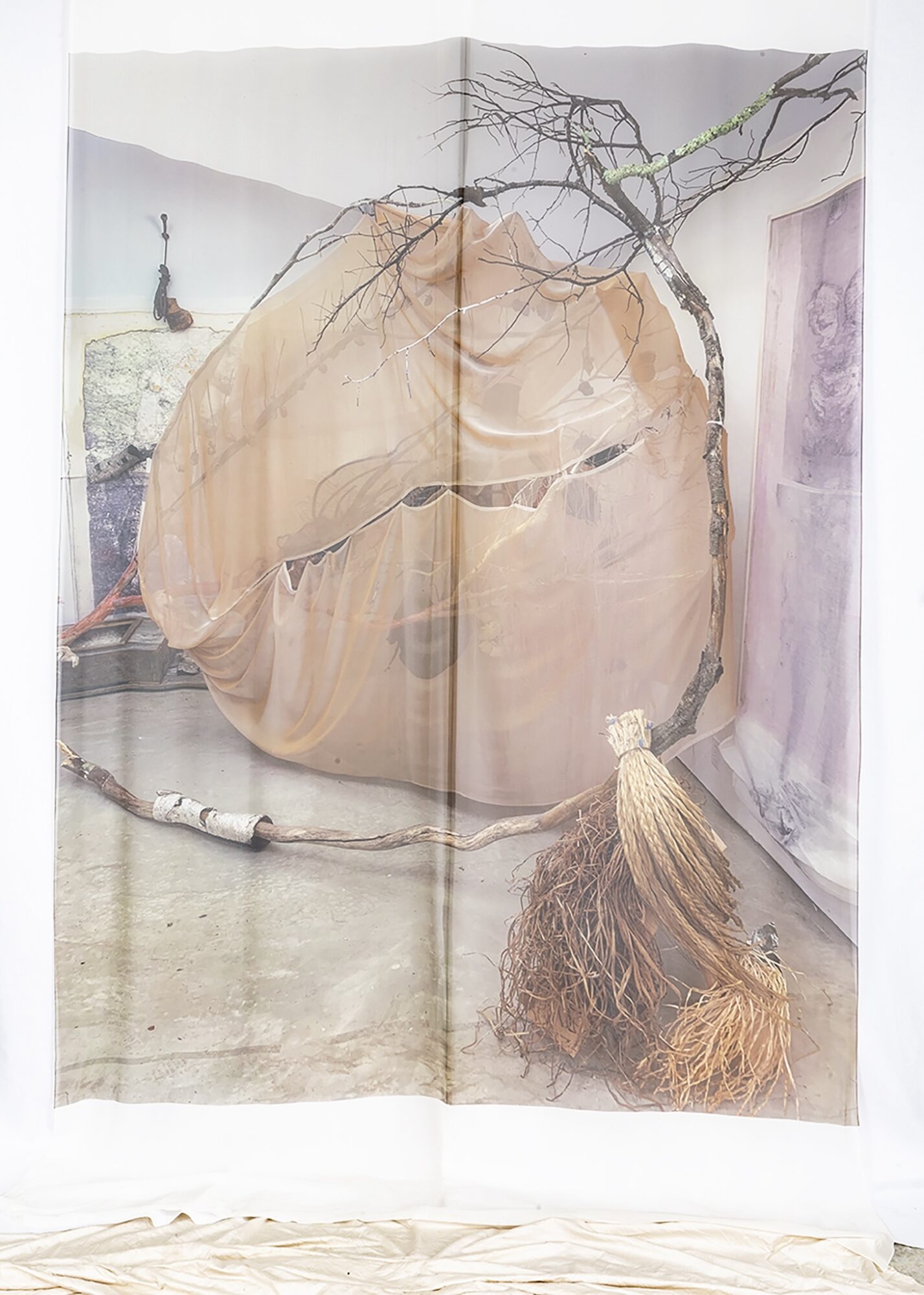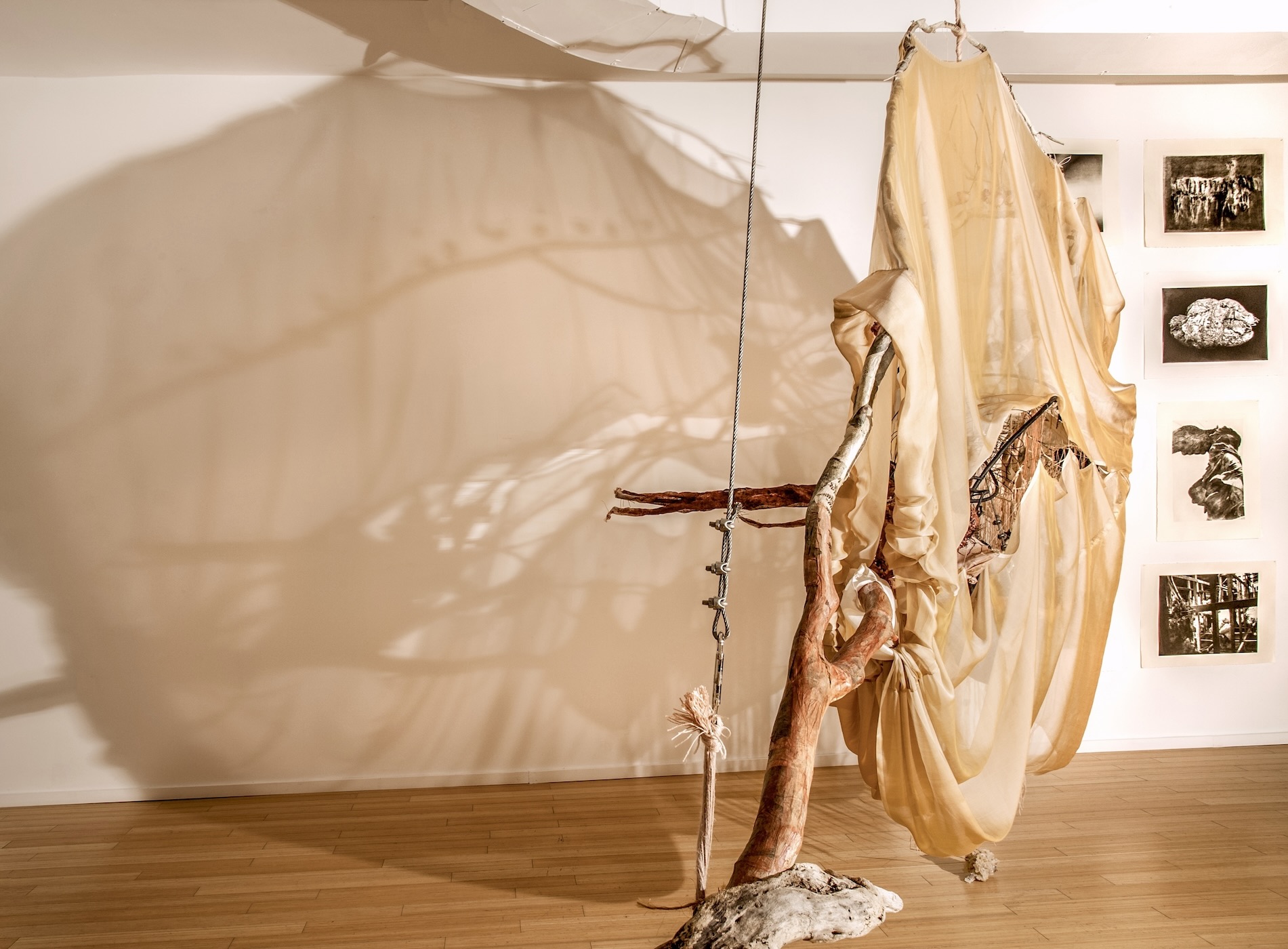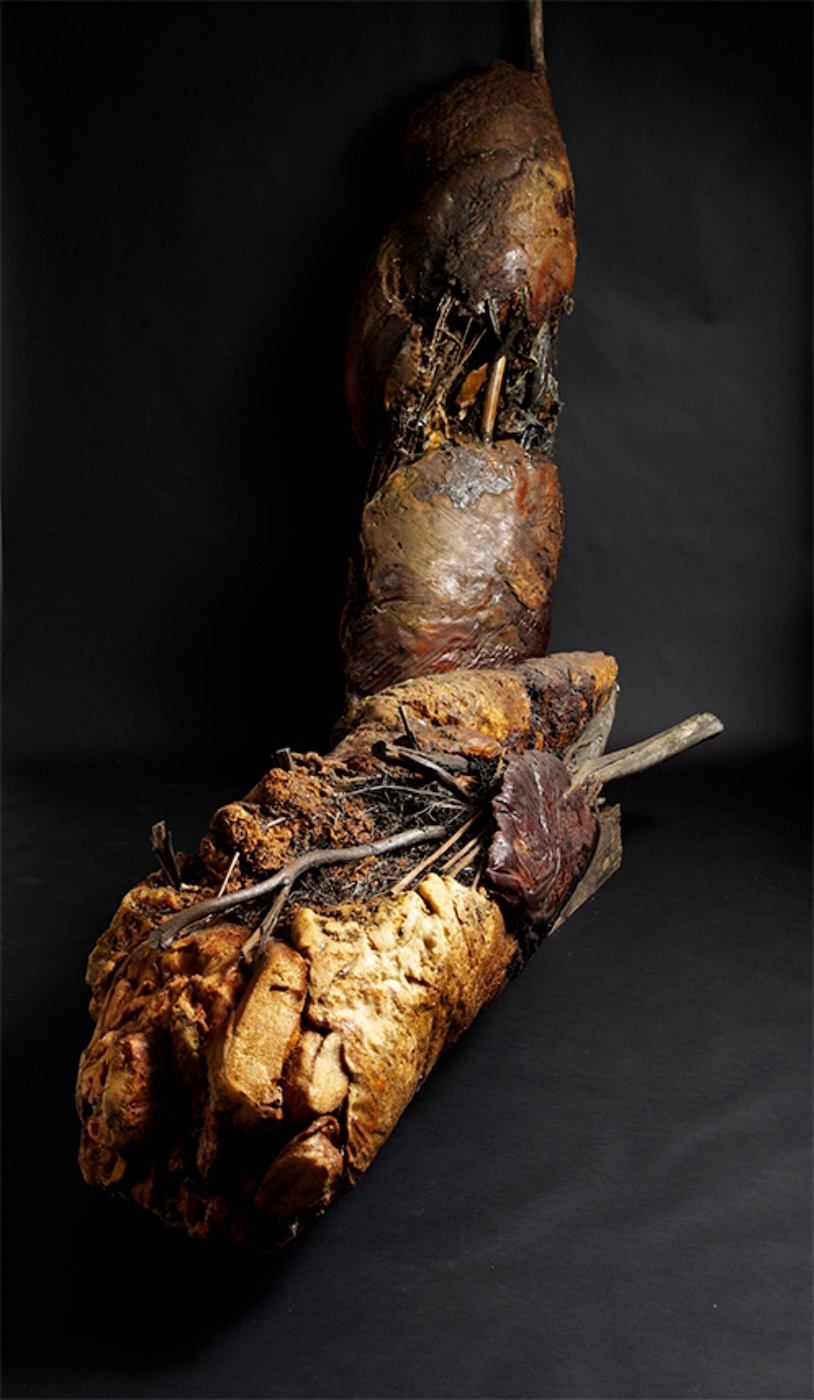

Today we’d like to introduce you to Robin Dintiman.
Alright, so thank you so much for sharing your story and insight with our readers. To kick things off, can you tell us a bit about how you got started?
I am a bi-coastal fine artist with studios in California and New York, rural and urban, working in various media.
I’m inspired by my surroundings in rural upstate New York, the wine country in the Valley of the Moon and the urban multifariousness of West Oakland’s Dog Town neighborhood.
My work is auto ethnographic in methodology. A life lived with it’s passions and suffering grafted from the natural world. Through Nature, I see the cycle of life reverberate. My art is grafted nature with oneiric reference. Through the natural world, we are all interconnected.
Consistent throughout my work, however, is an intimate focus on what I hold to be our most the most complex human syntax the transience of life, how we regard this vulnerability and its losses. I intricately explore these thoughts through nature-based works that express how we experience the world through our bodies. My work weaves together a range of media to form chains of visual suggestions. Is that an animal head or a tree stump? Is this animal skin or discarded textile? I am focused on how our minds cycle through associative modes, prior experiences as we attempt to make sense of things. I feel the work is successful when it beckons viewers to interact with it, question it, try to draw meaning.
Resolving things that puzzle us expands our awareness, visual memory, and sense of connectedness, enriching our understanding of our collective human condition.
The edge of life, it’s intense eros and the suffering we endure, is where the work resides. Burrowing beneath the surface of life to reveal the ephemeral elements of our humanness in it’s natural existence, I pierce the fragility to rise to an optimism of understanding our condition. The grace of space which art creates is where I reside to deal with the ineffable.
At very young age, I adamantly announced that I was and always would be an artist. I maintained that position throughout childhood. When asked Why, I said, “Because art is truth.” Many years later, my position and response remain the same.
Over the years, my searches for and reflections of truth in my art have regularly drawn from personal diaries and dreams, while also consistently expanding to embrace many other less introspective sources of inspiration. The thrust of my practice has been in sculpture, photography, and textiles, but I’ve also worked extensively in drawing, printmaking, and installation. The scope, range, and broadened goals of my artworks chart the creative growth of my practice in various media and scales.
Alongside a search for truth, a tandem concern that has become paramount in my work pertains to how we regard or treat one another, and things in the world in general, in the process of transition from life to death. This concern runs parallel with my interests in ecology and environmentalism.
I grew up on Elm Road, named for the beautiful trees that lined its streets. By the end of my high school years, the road I walked down every day had lost all its Elms. I was deeply moved by Rachel Carson’s landmark book published around that time, Silent Spring, which addresses the devastating impact human interventions have had on the environment, and how the fallout ultimately compromises our own livelihoods and well-being. Her book seemed prophetic to me. As we now know, it was prophetic indeed. Anxiety over environmental loss, and the feelings of solastalgia it induces, have been conceptual features of my work for decades, articulated through a consistently increasing diversity of approaches.
I experienced extended study in Japan at a young age which broadened my awareness on all things human and an encompassing attitude towards nature. Buddhism, specifically Zen, made a indelible impact. The natural world is linked through Indira’s Web with its ten directions of consciousness. Conscious is far greater than quantum physics so beyond our human consciousness. Striving for understanding of our consciousness is embedded in my work. How we grow through our awareness of the cycle of life with creativity at the helm.
I traveled widely overseas and throughout the US. Living in many places has given me appreciation for the many kinds of customs, differences and vulnerability of all people.
Being a woman in the grossly male dominated art world, I have experienced setbacks too many to list. Perseverance is the only way I have worked through the nay-seers. Just keep on working despite the myriads of problems which confront. I have taught, made a living in the creative arena, curated, worked for and supported arts organizations east and west coast. My life is about creativity and following the path.
We all face challenges, but looking back would you describe it as a relatively smooth road?
Early on when I was choosing my vocation, my father discouraged me about becoming an artist. So it has been a lifelong goal to over come this lack of encouragement. Nothing was going to stop me. I got fellowships, grants, residencies to articulate my career. Finding many creative related ways to pursue a dream, has been very valuable. Lessons in self-preservation would fill books.
Can you tell our readers more about what you do and what you think sets you apart from others?
My work is focused on the transience of life, in the meaning, fragility or vulnerability in our physical bodies, which I see reflected in n ature around me. Most of my workplaces are in very highly wooded areas. In Kenwood I’m looking at mountains and hundreds of acres of state park. Back east, where I was raised along the Hudson River, I also have a studio in the woods with bears, mountain lions and coyotes. The exposure to the cycle of life is something that is an essential part of the work and has been for a long time.
I lived a very intense life. I because aware from a very young age that because of being exposed to nature we are fragile. Since 1998 when my closest friend and colleague died suddenly after surgery, I haver had multiple members of my family including my husband be seriously ill. I was caregiving for all of them and I was with them when they transitioned. Out of necessity I have worked from these profound events.
My work is intense and moves from an expressionism in art theory to unrestrained ideas, delicately interplaying life and death.
Before we let you go, we’ve got to ask if you have any advice for those who are just starting out?
Listening to your own experience above all if you want to find your unique path. Seeking advise only from those artists you deeply respect. This is hard tedious work. Never let others stop you, never let the chatter in your brain travel into your bones, be physically fit to maintain the stamina for this life of creativity, read all you can about artist lives, go see shows even if you hate the work, learn with your eyes and above all hold onto your wonder which you had as child.
Contact Info:
- Website: https://www.robindintiman.com
- Instagram: https://www.o\instagram.com/robin_dintiman/.
- Facebook: Robin Dintiman, robindintiman
- LinkedIn: Robin Dintiman
